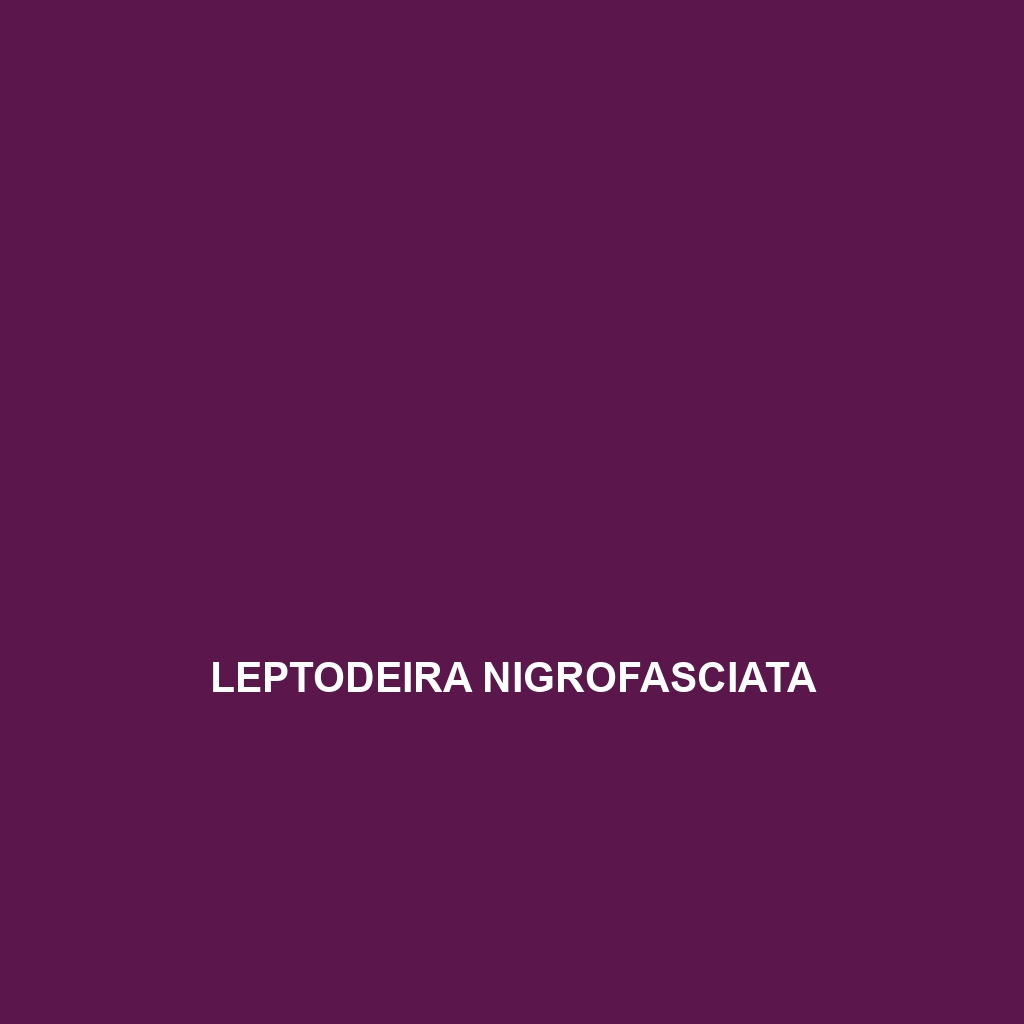Common Name
Leptodeira nigrofasciata
Scientific Name
Leptodeira nigrofasciata
Habitat
Leptodeira nigrofasciata, also known as the Black-banded Snake, primarily inhabits a variety of geographic locations across Central and South America. This species is typically found in regions characterized by rainforests, savannas, and temperate forests. The ideal environmental conditions for this snake include humid, temperate climates where vegetation is dense, providing ample cover and hunting grounds. The Black-banded Snake thrives in areas close to water, such as streams and marshy environments, reflecting its affinity for moist habitats that support its prey. It is often seen basking in the sun during the day or hunting during the cooler times of the day or night, showcasing its adaptability to different ecological conditions.
Physical Characteristics
Leptodeira nigrofasciata typically measures between 60 to 100 cm (24 to 39 inches) in length. The snake features a slender body with smooth scales, which are essential for its agile movements. Its coloration is primarily characterized by a dark brown or black background adorned with distinctive broad, light-colored bands that run horizontally across its body. These striped patterns serve as effective camouflage within its natural surroundings. Additionally, the head is slightly triangular, and its relatively large eyes offer excellent vision, aiding in hunting in low-light conditions. The combination of size, coloration, and unique patterning sets Leptodeira nigrofasciata apart from other snake species.
Behavior
Diet
Leptodeira nigrofasciata is a carnivorous species that primarily preys on small vertebrates, including rodents, frogs, and lizards. The snake is also known to consume insects, making it somewhat of an insectivore during its juvenile stages. Its predatory skills are enhanced by its acute sense of smell and vision, enabling it to detect movement in dense foliage. Typically, this species relies on ambush techniques, lying in wait for unsuspecting prey to pass by before striking with speed and precision. The varied diet of Leptodeira nigrofasciata plays a crucial role in regulating populations of other species in its habitat.
Reproduction
The reproductive cycle of Leptodeira nigrofasciata generally occurs during the wet season, when food is abundant and environmental conditions are favorable. Mating usually takes place in spring, where males use pheromones to attract females. After successful mating, the gestation period can last from 60 to 90 days. Females typically give birth to live young, with litters ranging from 6 to 20 snakes, depending on the female’s size and health. The young are independent from birth, instinctively knowing how to hunt and navigate their environment, showcasing the adaptability of this species in its reproductive strategy.
Conservation Status
Currently, Leptodeira nigrofasciata is classified as Least Concern by the International Union for Conservation of Nature (IUCN). While the species is not facing significant immediate threats, habitat destruction due to deforestation and urbanization poses potential risks in the long term. Conservation efforts are minimal but are supported by principles aimed at preserving natural habitats and reducing human encroachment on its ecological range. Monitoring population trends is essential to ensure that Leptodeira nigrofasciata continues to thrive in its natural environments.
Interesting Facts
Leptodeira nigrofasciata is not only notable for its striking appearance but also for its fascinating adaptations. One unique fact about this species is its ability to mimic the behavior of more venomous snakes, which may deter predators. Additionally, the Black-banded Snake has been observed utilizing its long tail to mimic the appearance of a branch, an effective camouflage technique that allows it to remain hidden from both predators and prey. The adaptability and intelligence displayed by this species emphasize its unique role within the ecosystem.
Role in Ecosystem
Leptodeira nigrofasciata plays an integral role in its ecosystem, serving both as a predator and prey. By regulating the populations of small mammals and insects, this snake helps maintain ecological balance. Furthermore, it serves as a food source for larger predators, such as birds of prey and larger snakes, linking it to various trophic levels within its habitat. Its role as a predator and its contribution to the biodiversity of its environment underscore the importance of preserving its natural habitats.
This species description provides a comprehensive overview of Leptodeira nigrofasciata, employing SEO-friendly keywords and structured properly for web publication.
